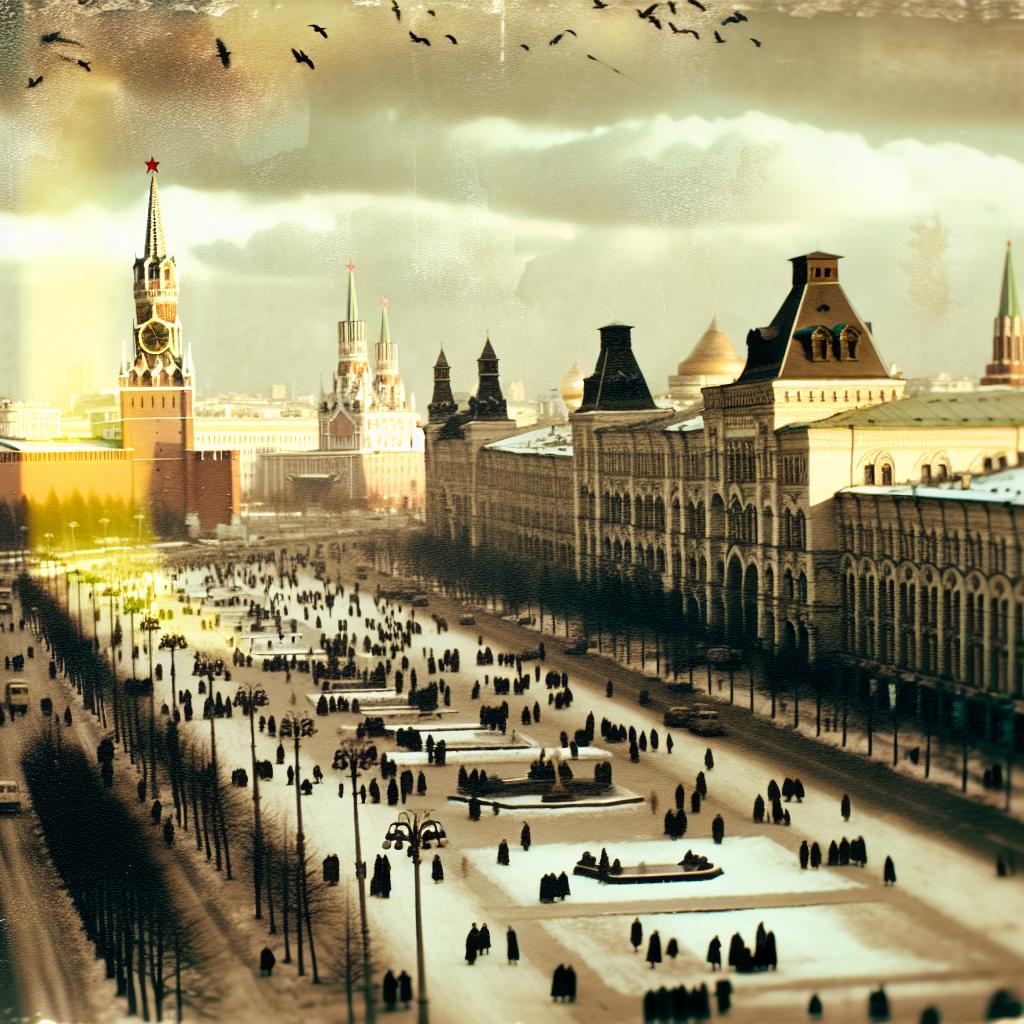Moscow: The Heart of the Soviet Union
Moscow, the capital city of the Soviet Union, held a crucial role as the epicenter of political power and cultural influence from 1922 until the dissolution of the USSR in 1991. It was not just a city but a symbol of a socialist reality, bustling with activities that reflected the intricate layers of the nation it represented. This narrative expands on Moscow’s multifaceted identity during the Soviet period, shedding light on its political, economic, cultural, and social dimensions.
Political and Administrative Hub
From the high towers of the Kremlin to the expansive cobblestones of the Red Square, Moscow was synonymous with Soviet governance. Essential for understanding the Soviet Union’s political landscape was the Kremlin, which was home to key institutions responsible for the governance of the massive state. This fortified complex was the residence of Soviet leaders and functioned as the nerve center for executive administration. It was here that decisions shaping the futures of millions were made, influencing the global chessboard as well.
The Red Square, adjacent to the Kremlin, became more than just a location; it resonated as a symbol of Soviet power. It served as the backdrop to massive military parades, where columns of soldiers and military hardware exhibited Soviet strength. For citizens and visiting diplomats alike, these parades highlighted the might of the Soviet Armed Forces and communicated the power dynamics in play during the Cold War period. They were not merely displays of military capability but were crafted as physical representations of the Communist Party’s ideological dominance.
Economic and Industrial Development
Moscow’s transformation into an industrial powerhouse was a testament to the USSR’s commitment to fostering economic and industrial growth. Central to this ambition were the Five-Year Plans, state-driven initiatives aimed at catapulting the Soviet economy into a competitive position on the global stage. These plans steered the city towards significant industrial output, with factories dotting the urban landscape and churning out products ranging from textiles to heavy machinery.
The industrialization of Moscow was not an isolated phenomenon. Instead, it was part of a comprehensive approach to bolster the Soviet economy, allowing it to become less reliant on Western imports and more self-sufficient. As Moscow’s industrial landscape expanded, it provided employment for thousands, turning the city into a beacon of socialist productivity and resilience.
Cultural and Educational Institutions
Culturally, Moscow stood as a cornerstone of Soviet achievements. The city housed some of the most prestigious institutions that defined Soviet excellence, such as the Moscow State University and the Bolshoi Theatre. These institutions were not merely educational and cultural bodies; they represented the zenith of Soviet scholarship and artistry, emanating a sense of pride and national achievement.
Moscow’s cultural vibrancy was further reflected in its collection of museums, galleries, and libraries. These venues were essential in propagating socialist ideals, showcasing what the state defined as exemplary achievements in arts and sciences. Moreover, by hosting international cultural events, Moscow positioned itself as a locus of intellectual and cultural exchange, aimed at boosting its diplomatic clout worldwide.
Social Life and Urban Development
Socially, life in Moscow was shaped by the socialist policies that governed the USSR. One of the prominent features of urban living in the city was the concept of kommunalkas or communal apartments. These living spaces were allocated to multiple families who shared amenities. The idea behind kommunalkas was to foster community spirit and equality among residents, reflecting the larger socialist aim of collectivism in everyday life.
Urban development in Moscow was also a canvas for the expression of socialist ideals. Wide boulevards and enormous public spaces were commonplace, designed not only for the utilitarian purpose of accommodating the city’s bustling population but also to project the grandeur and ambition of a socialist capital. Such planning underscored a vision that combined functionality with the monumentality expected of a global capital leading the Communist bloc.
As an evolving metropolis, Moscow also faced the challenges typical of large urban centers, including the effective management of transportation, housing, and public services. Attempts to resolve these issues were crucial in the continuous effort to maintain the city’s status as the heart of the Soviet Union.
For those keen on delving deeper into Moscow’s rich Soviet history, a wealth of resources can be found within the city’s present-day museums and archives. These repositories offer more detailed accounts and documents for those interested in understanding the breadth of events that transpired during this chapter of Moscow’s history. For further exploration, you may consider visiting the official sites of these museums, such as those dedicated to preserving historical narratives, where more in-depth analyses and historical documents are made accessible.
In closing, Moscow’s role as a dynamic and central hub of the Soviet Union encompassed more than politics and governance; it was a pivotal point for economic, cultural, and social activities. Each facet of the city during this time added layers to its identity, creating a complex yet cohesive tapestry that symbolized the ethos and aspirations of the Soviet state. This legacy continues to inform Moscow’s position within Russia and the wider world even today.

